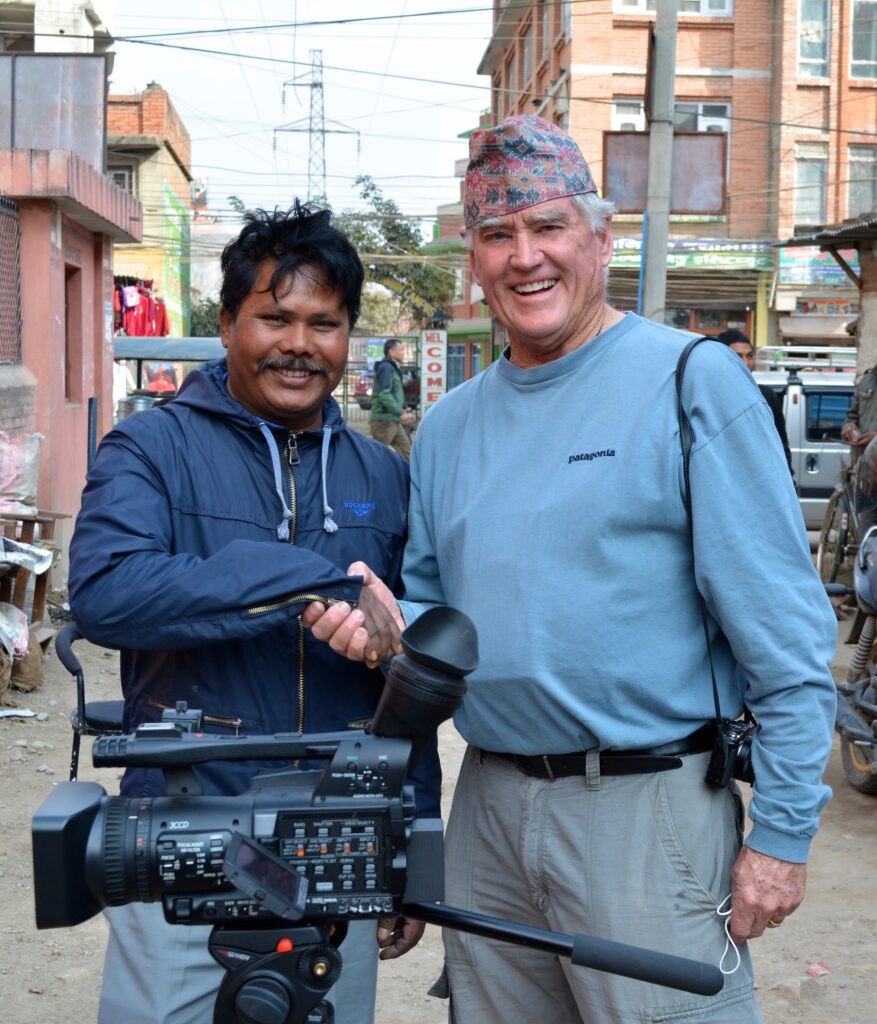 Throughout Nepal, large freight trucks painted by artists provide visual entertainment for travelers along the highways and dangerous mountain roads of the Himalayas. These trucks captivated UC San Diego Department of Theatre and Dance lecturer emeritus Ron Ranson, who taught theatre design and painting for the stage. Ranson turned his fascination with this colorful art form into the documentary “Tattooed Trucks of Nepal – Horn Please!” now playing on UCTV.
Throughout Nepal, large freight trucks painted by artists provide visual entertainment for travelers along the highways and dangerous mountain roads of the Himalayas. These trucks captivated UC San Diego Department of Theatre and Dance lecturer emeritus Ron Ranson, who taught theatre design and painting for the stage. Ranson turned his fascination with this colorful art form into the documentary “Tattooed Trucks of Nepal – Horn Please!” now playing on UCTV.
We asked Ranson to talk about his journey and inspiration to create this film.
UCTV: How did you end up in Nepal?
Ranson: I was a Peace Corps Volunteer in Nepal soon after the Peace Corps was established there in 1962. I served in Nepal from 1964-66. This post was a jungle setting with tigers, rhinos, crocodiles and other wild animals, as opposed the mountain set-tings that Nepal is more known for. I have visited there five times over those years – visiting old friends and students and doing a lot trekking with my family.

UCTV: Why did you decide to produce this documentary?
Ranson: Two of my Nepali photographer friends were out of work after the earth-quakes of 2015. I read an article in a Nepali newspaper about truck and bus painting and decided to investigate as I thought it would make an unusual and arty story. We started work in January 2017 and finished in August 2021.
UCTV: How did making this film change your understanding of Nepal and its people?
Ranson: There have been many changes to Nepali culture since I was there in 1964. I’m impressed that as the “concrete jungle” of Kathmandu pushes in on traditional icons of Nepali culture there is another way of expressing what is really important to them…images of their spiritual life, sporting heroes of Europe (!), Bob Marley (!) and traditional images of their families. Nepali are very adaptable – and this shows what they can do.

UCTV: What’s one thing you’d like viewers to take away from this story?
Ranson: The people have been kind, openhearted and generous – even when they didn’t have much to give. I would like to think I’ve given them a voice in the world to their unique art and creative expression.




